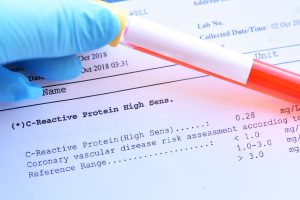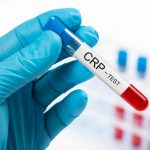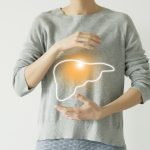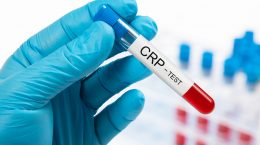Published on April 17, 2023
What does your hsCRP test result mean, what is considered a high result, and what steps can be taken to bring it down along with lowering inflammation?
Key Points
- High levels of CRP are often seen in acute inflammation and have been correlated with high cardiovascular disease risk, while smaller elevations are often indicative of chronic inflammation and chronic diseases, such as metabolic syndrome and diabetes
- An increase in CRP levels can indicate a hidden disease that has not yet been diagnosed; in fact, some research suggests that the level of CRP can predict heart disease even ten years before diagnosis
- A normal hs-CRP level is below 3.0 mg/L. A level between 3.1-10 mg/L is considered elevated, usually seen in chronic inflammation such as that involved with cardiovascular disease risk. An hs-CRP level above 10 mg/ L is very high, more likely indicating an acute inflammatory event due to infection or trauma.
- Lowering CRP levels in the long term can be addressed with specific lifestyle changes such as increasing exercise, losing weight, and quitting smoking; doing so can also help decrease the risk of many chronic diseases associated with chronic inflammation and higher CRP levels
 Inflammation, as a major cause of many chronic diseases, can go unnoticed and be very damaging long term. C-reactive protein (CRP) is a protein produced by the liver in response to a broad range of causes, such as infection from hepatitis to cancer, and is a general marker of inflammation. An increase in CRP levels can indicate a hidden disease that has not yet been diagnosed; in fact, some research suggests that the level of CRP can predict heart disease even ten years before diagnosis.
Inflammation, as a major cause of many chronic diseases, can go unnoticed and be very damaging long term. C-reactive protein (CRP) is a protein produced by the liver in response to a broad range of causes, such as infection from hepatitis to cancer, and is a general marker of inflammation. An increase in CRP levels can indicate a hidden disease that has not yet been diagnosed; in fact, some research suggests that the level of CRP can predict heart disease even ten years before diagnosis.
High levels are often seen in acute inflammation and have been correlated with high cardiovascular disease risk, while smaller elevations are often indicative of chronic inflammation and chronic diseases, such as metabolic syndrome and diabetes.
The CRP blood spot test offered by GrassrootsHealth uses a high sensitivity assay, hs-CRP where “hs” means high sensitivity, to detect small elevations in CRP.
When is an hsCRP Level Considered High?
A normal hs-CRP level is below 3.0 mg/L. A level between 3.1-10 mg/L is considered elevated, usually seen in chronic inflammation such as that involved with cardiovascular disease risk. An hs-CRP level above 10 mg/ L is very high, more likely indicating an acute inflammatory event due to infection or trauma.
What does a High hsCRP Level Mean, and What Might be Cause for Concern?
An hsCRP level at the very high range (above 10 mg/L) is most often seen after acute injury, infection, or surgery (including dental work). Known as an ‘acute-phase’ marker of inflammation, CRP is produced in response to inflammation and tissue damage, and levels can increase drastically within hours following the infection or injury.
High levels can also be seen during a flare-up of a known chronic condition (e.g. sickle cell disease, thalassemia, diabetes, cancer, heart disease, or rheumatology/autoimmune disease), or can be associated with smoking, overweight/obesity, high triglycerides, insulin resistance, diabetes, and renal dysfunction.
An hsCRP level that is consistently in the elevated range (between 3.1-10 mg/L) may be due to an underlying chronic disease, and re-testing is highly recommended. If your hsCRP result is consistently high without a known cause or reason, it is recommended that you discuss your results with your health care provider, who may recommend additional testing.
How Can You Lower Your hsCRP Level?
In some cases, such as following an injury or recovering from an illness or infection, a high hsCRP level will decrease on its own over time. Lowering CRP levels in the long term can be addressed with specific lifestyle changes such as increasing exercise, losing weight, and quitting smoking. Doing so can also help decrease the risk of many chronic diseases associated with chronic inflammation and higher CRP levels.
The blogs below offer more specific information and research on reducing hsCRP levels and inflammation.
 CRP, an Indicator of Current and Future Health, is Greatly Influenced by Several Nutrients
CRP, an Indicator of Current and Future Health, is Greatly Influenced by Several Nutrients
Studies have associated CRP levels with the intake and status of specific nutrients, including vitamin D, omega-3s, and magnesium. This post reviews several such studies and also discusses specific disease associated with high CRP levels and chronic inflammation.
 Reducing Inflammation through Diet
Reducing Inflammation through Diet
Several different nutrients and compounds, such as polyphenols, omega-3 fatty acids, and antioxidant vitamins, have been shown to have anti-inflammatory effects, while others, such as some saturated fats, trans-fatty acids, and sugars, have pro-inflammatory effects. This post reviews specific foods and diets that have been associated with lowering inflammation and CRP levels.
 DHA Supplementation Decreases C-Reactive Protein and other Markers of Inflammation
DHA Supplementation Decreases C-Reactive Protein and other Markers of Inflammation
DHA supplementation may improve heart health in several ways including a significant anti-inflammatory effect. This post summarizes a study on the effects of supplementation with an omega-3 fatty acid, docosahexaenoic acid (DHA), on inflammation in men who were at high risk of developing heart disease. Of note, the reduction in CRP concentrations found in this study is comparable to the 15-25% reduction in CRP caused by statins (the frontline pharmaceuticals used to prevent heart attacks and stroke) without any of the adverse effects.
 Vitamin D Shown to Improve Markers of Liver and Cardiovascular Health
Vitamin D Shown to Improve Markers of Liver and Cardiovascular Health
This post reviews a study that evaluated whether improving vitamin D serum levels had a beneficial effect on liver function, as well as markers of inflammation (including CRP), kidney function, and cardiovascular health. The study found a 41% decrease in CRP levels among women who were treated with vitamin D for two months.
Other blogs of interest include:
Association between Vitamin D and Inflammation in 24 Diseases
Inflammation Reduced with Vitamin D and Omega-3
Inflammation reduced with magnesium, zinc, calcium, and vitamin D co-supplementation
Probiotics may help Improve C-Reactive Protein Levels in Alzheimer’s Patients
Learn more about research and topics related to CRP here.
Other Important Measurements to Include with Your hsCRP Test
What else can you test with your home blood spot kit?
- Vitamin D
- Magnesium PLUS Elements
- Omega-3 Fatty Acids
- hsCRP
- HbA1c
- TSH
- Type 1 Diabetes Autoantibodies
Did you know that each of the above can be measured at home using a simple blood spot test? As part of our ongoing research project, you can order your home blood spot test kit to get your levels, followed by education and steps to take to help you reach your optimal target levels. Start by enrolling and ordering your kit to measure each of the above important markers, and make sure you are getting enough of each to support better mood and wellbeing!
Create your custom home test kit today. Take steps to improve the status of each of these measurements to benefit your overall health. With measurement you can then determine how much is needed and steps to achieve your goals. You can also track your own intakes, symptoms and results to see what works best for YOU.
Enroll in D*action and Test Your Levels Today!






